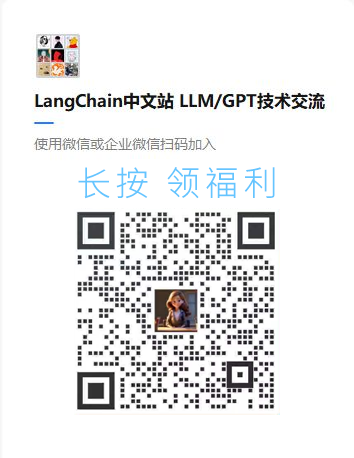Label Studio
Label Studio 是一个开源数据标注平台,为 LangChain 提供了在标注数据以微调大型语言模型 (LLMs) 时的灵活性。它还支持准备自定义训练数据以及通过人类反馈收集和评估响应。
在本指南中,您将学习如何将 LangChain 管道连接到 Label Studio 以:
- 在单个
Label Studio项目中聚合所有输入提示、对话和响应。这将所有数据集中在一个地方,便于标注和分析。 - 精炼提示和响应,以创建用于监督微调 (SFT) 和人类反馈强化学习 (RLHF) 场景的数据集。标注的数据可以用于进一步训练 LLM,以提高其性能。
- 通过人类反馈评估模型响应。
Label Studio提供了一个界面,供人类审查和反馈模型响应,从而实现评估和迭代。
安装和设置
首先安装最新版本的 Label Studio 和 Label Studio API 客户端:
%pip install --upgrade --quiet langchain label-studio label-studio-sdk langchain-openai langchain-community
接下来,在命令行中运行 label-studio 以在 http://localhost:8080 启动本地 LabelStudio 实例。有关更多选项,请参阅 Label Studio 安装指南。
您需要一个令牌来进行 API 调用。
在浏览器中打开您的 LabelStudio 实例,转到 账户与设置 > 访问令牌 并复制密钥。
设置环境变量,包含您的 LabelStudio URL、API 密钥和 OpenAI API 密钥:
import os
os.environ["LABEL_STUDIO_URL"] = "<YOUR-LABEL-STUDIO-URL>" # e.g. http://localhost:8080
os.environ["LABEL_STUDIO_API_KEY"] = "<YOUR-LABEL-STUDIO-API-KEY>"
os.environ["OPENAI_API_KEY"] = "<YOUR-OPENAI-API-KEY>"
收集 LLMs 提示和响应
用于标记的数据存储在 Label Studio 的项目中。每个项目由一个 XML 配置文件标识,该文件详细说明了输入和输出数据的规格。
创建一个项目,该项目接受文本格式的人类输入,并在文本区域输出可编辑的 LLM 响应:
<View>
<Style>
.prompt-box {
background-color: white;
border-radius: 10px;
box-shadow: 0px 4px 6px rgba(0, 0, 0, 0.1);
padding: 20px;
}
</Style>
<View className="root">
<View className="prompt-box">
<Text name="prompt" value="$prompt"/>
</View>
<TextArea name="response" toName="prompt"
maxSubmissions="1" editable="true"
required="true"/>
</View>
<Header value="Rate the response:"/>
<Rating name="rating" toName="prompt"/>
</View>
- 要在 Label Studio 中创建项目,请单击“创建”按钮。
- 在“项目名称”字段中输入项目名称,例如
我的项目。 - 导航到
标记设置 > 自定义模板并粘贴上述提供的 XML 配置。
您可以在LabelStudio项目中收集输入的LLM提示和输出响应,通过LabelStudioCallbackHandler连接它:
<!--IMPORTS:[{"imported": "LabelStudioCallbackHandler", "source": "langchain_community.callbacks.labelstudio_callback", "docs": "https://python.langchain.com/api_reference/community/callbacks/langchain_community.callbacks.labelstudio_callback.LabelStudioCallbackHandler.html", "title": "Label Studio"}]-->
from langchain_community.callbacks.labelstudio_callback import (
LabelStudioCallbackHandler,
)
<!--IMPORTS:[{"imported": "OpenAI", "source": "langchain_openai", "docs": "https://python.langchain.com/api_reference/openai/llms/langchain_openai.llms.base.OpenAI.html", "title": "Label Studio"}]-->
from langchain_openai import OpenAI
llm = OpenAI(
temperature=0, callbacks=[LabelStudioCallbackHandler(project_name="My Project")]
)
print(llm.invoke("Tell me a joke"))
在Label Studio中,打开我的项目。您将看到提示、响应和模型名称等元数据。
收集聊天模型对话
您还可以在LabelStudio中跟踪和显示完整的聊天对话,并能够对最后的响应进行评分和修改:
- 打开Label Studio并点击“创建”按钮。
- 在“项目名称”字段中输入您的项目名称,例如
与聊天的新项目。 - 导航到标注设置 > 自定义模板,并粘贴以下XML配置:
<View>
<View className="root">
<Paragraphs name="dialogue"
value="$prompt"
layout="dialogue"
textKey="content"
nameKey="role"
granularity="sentence"/>
<Header value="Final response:"/>
<TextArea name="response" toName="dialogue"
maxSubmissions="1" editable="true"
required="true"/>
</View>
<Header value="Rate the response:"/>
<Rating name="rating" toName="dialogue"/>
</View>
<!--IMPORTS:[{"imported": "HumanMessage", "source": "langchain_core.messages", "docs": "https://python.langchain.com/api_reference/core/messages/langchain_core.messages.human.HumanMessage.html", "title": "Label Studio"}, {"imported": "SystemMessage", "source": "langchain_core.messages", "docs": "https://python.langchain.com/api_reference/core/messages/langchain_core.messages.system.SystemMessage.html", "title": "Label Studio"}, {"imported": "ChatOpenAI", "source": "langchain_openai", "docs": "https://python.langchain.com/api_reference/openai/chat_models/langchain_openai.chat_models.base.ChatOpenAI.html", "title": "Label Studio"}]-->
from langchain_core.messages import HumanMessage, SystemMessage
from langchain_openai import ChatOpenAI
chat_llm = ChatOpenAI(
callbacks=[
LabelStudioCallbackHandler(
mode="chat",
project_name="New Project with Chat",
)
]
)
llm_results = chat_llm.invoke(
[
SystemMessage(content="Always use a lot of emojis"),
HumanMessage(content="Tell me a joke"),
]
)
在Label Studio中,打开“与聊天的新项目”。点击创建的任务以查看对话历史并编辑/注释响应。
自定义标注配置
您可以在LabelStudio中修改默认的标注配置,以添加更多目标标签,如响应情感、相关性和许多其他类型的标注者反馈。
可以从用户界面添加新的标记配置:前往 设置 > 标记界面 并设置一个自定义配置,添加如 Choices 的情感标签或 Rating 的相关性标签。请记住,任何配置中都应包含 TextArea 标签 以显示大型语言模型的响应。
或者,您可以在项目创建之前的初始调用中指定标记配置:
ls = LabelStudioCallbackHandler(
project_config="""
<View>
<Text name="prompt" value="$prompt"/>
<TextArea name="response" toName="prompt"/>
<TextArea name="user_feedback" toName="prompt"/>
<Rating name="rating" toName="prompt"/>
<Choices name="sentiment" toName="prompt">
<Choice value="Positive"/>
<Choice value="Negative"/>
</Choices>
</View>
"""
)
请注意,如果项目不存在,将使用指定的标记配置创建该项目。
其他参数
LabelStudioCallbackHandler 接受几个可选参数:
- api_key - Label Studio API 密钥。覆盖环境变量
LABEL_STUDIO_API_KEY。 - url - Label Studio URL。覆盖
LABEL_STUDIO_URL,默认值为http://localhost:8080。 - project_id - 已存在的 Label Studio 项目 ID。覆盖
LABEL_STUDIO_PROJECT_ID。在此项目中存储数据。 - project_name - 如果未指定项目 ID,则为项目名称。创建一个新项目。默认值为
"LangChain-%Y-%m-%d",格式为当前日期。 - project_config - 自定义标记配置
- 模式: 使用此快捷方式从头创建目标�配置:
"提示词"- 单个提示词,单个响应。默认。"聊天"- 多轮聊天模式。

